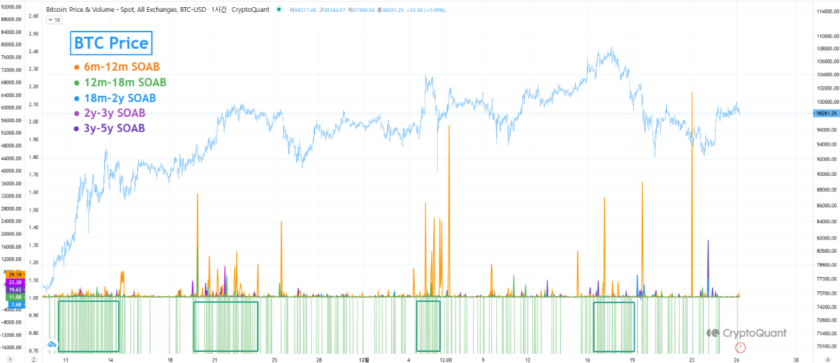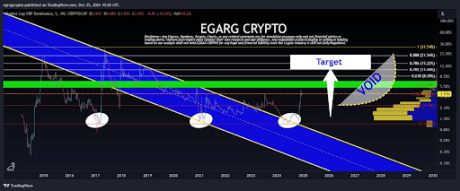By Rafael Delfin, Head of Research at Brave New Coin, a leading provider of high-value cryptocurrency market data and insights, since 2012.
October 31st, 2018 marked the 10-year anniversary of the publication of Bitcoin’s white paper. While it was initially circulated among a small and obscure cryptography mailing list, one decade later, the implementation of the mythical white paper is disrupting the world’s notion of money, sovereignty, and everything in between.
Since its inception, bitcoin’s performance has been nothing short of extraordinary. With its highly volatile nature, it has seen a price crash of 70% from $19K USD to $6K USD in 2018. However, it has also seen a significant price increase since 2011. Since then, bitcoin’s price and market capitalization grew by 100 fold during late 2017.
Bitcoin’s public perception has evolved from an obscure proof-of-concept of electronic cash during its early days, to an anonymous currency used in the dark web to pay for illegal goods, to a censorship-resistant store of value and uncorrelated financial asset, now that forward-thinking investors have become more familiarised and comfortable with crypto assets.
Along the way, the crypto asset has also overcome paralyzing conflict. The most prominent being a year-long, contentious scaling debate that culminated in mid-2017. It was during this time that the Bitcoin Cash project forked off Bitcoin, championing cheap P2P payments through an increase in block size. Fortunately, one month later, Bitcoin saw the activation of Segregated Witness. This not only removed a transaction malleability bug and translated in significantly cheaper and faster transactions but also allowed for future additional scaling projects to be implemented on the network.
The Lightning Network, which went live during Q1 of 2018, allowing for near-instant transactions, is one example of such additional scaling projects. A second scaling project that still a work in progress is MAST, short for Merkelized Abstract Syntax Trees, which will allow for even smaller transaction fees, as well as increased privacy and smart contract capabilities. Leaving bitcoin’s price aside, 2018 has been one of its best years, not only in terms of technological advancements, but also in terms of regulatory engagement, institutional involvement, and investment in market infrastructure.
Across the world, regulatory agencies and industry stakeholders are now launching self-regulated industry organisations (SROs) that aim to bring about market transparency and the regulatory safeguards required to drive the next adoption stage in the ecosystem. Examples of such SROs include the Virtual Commodities Association, in the U.S. and the Japanese Cryptocurrency Business Association. These are some of the largest markets for the crypto ecosystem.
At the same time, 2018 has seen the crypto industry mature significantly through the expansion of compliant product and service offerings in key jurisdictions. For example, the launch of crypto custody solutions for institutional investors by BitGo in the U.S., and Japan’s Nomura Bank. Also worth noting is the incursion of established players in the space, for example Goldman Sachs’ backing of Circle, Fidelity’s Digital Asset Services subsidiary for institutional crypto asset custody and trade execution, and the launch of Bitcoin futures platform Bakkt by Intercontinental Exchange (ICE), the parent company of the New York Stock Exchange (NYSE).
Given these exciting developments, it is expected that 2019 will see the steady growth of Bitcoin and the crypto ecosystem towards worldwide, mainstream adoption, along with the tokenization of value across industries. Both financial, such as low-cost remittances and tokenized securities, as well as non-financial use cases, such as public land title registries and identity solutions, have been in development for years now, and 2019 will be the year when a number of blockchain-based killer apps are finally launched to the public.
There is a big test for bitcoin and the crypto ecosystem looming over the horizon. As traditional financial markets began to tumble after their recovery from the 2008-2009 financial crisis, one of the most attractive investment features of crypto assets will be put to the test. That is, whether they represent an uncorrelated asset class to traditional financial assets, and if they can serve as a counter-cyclical hedge during times of financial turbulence.
I am confident the entire asset class will revisit previous all-time-high price levels. However, no one knows when will this happen. In the meantime, on the professional side, I will focus on building tools and infrastructure for the crypto industry. From a personal perspective, I will learn from history, peers, and past mistakes, in order to be well-positioned for the next rollercoaster ride.
Disclaimer: The views expressed in the article are solely those of the author and do not represent those of, nor should they be attributed to, CCN.
Featured Image from Shutterstock. Charts from TradingView.
Follow us on Telegram or subscribe to our newsletter here.





